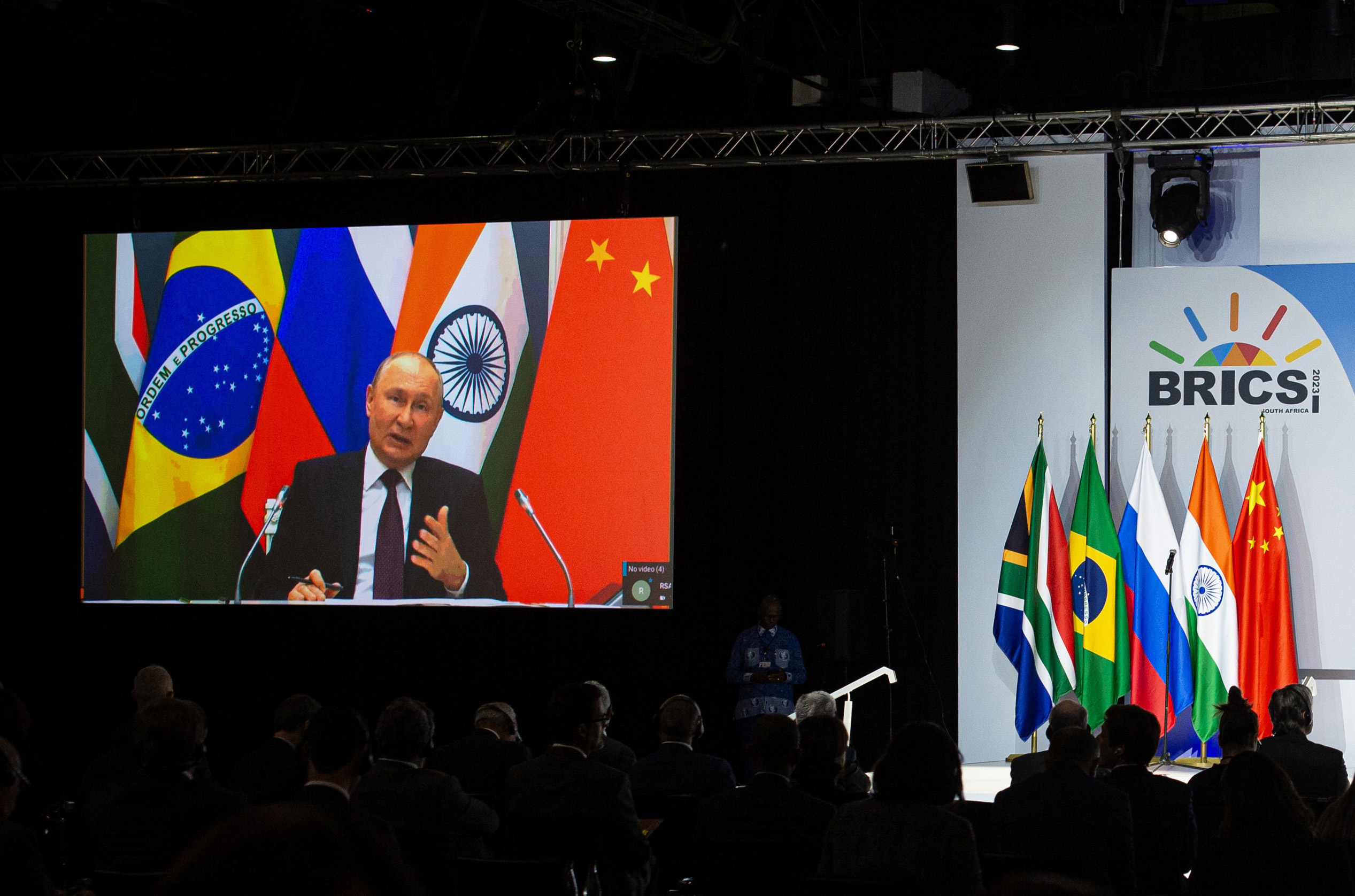
As the war in Afghanistan escalated several years ago, counterinsurgency expert David Kilcullen, a member of the team that designed the Iraq surge for Gen. David Petraeus, began to notice a new tattoo on some insurgent Afghan fighters. It wasn't a Taliban tattoo. It wasn't even Afghan. It was a Canadian maple leaf.
When a perplexed Kilcullen began to investigate, he says, he discovered that the incongruous flags were linked to what he says is one of the most important, and unnoticed, weapons of guerrilla war in Afghanistan and across the world: the lightweight, virtually indestructible Toyota Hilux truck.
"In Afghanistan in particular," he says, "[the trucks are] incredibly well respected." So well respected, in fact, that some enterprising fraudsters thought them worthy of ripping off. The imitations, Kilcullen says, had flooded the market, leaving disappointed fighters in their wake. But then "a shipment of high-quality [real] Hiluxes arrived, courtesy of the Canadian government," he explains. "They had little Canadian flags on the back. Because they were the real deal, and because of how the Hilux is seen, over time, strangely, the Canadian flag has become a symbol of high quality across the country. Hence the tattoos."
It's not just rebels in Afghanistan that love the Hilux. "The Toyota Hilux is everywhere," says Andrew Exum, a former Army Ranger and now a fellow of the Center for a New American Security. "It's the vehicular equivalent of the AK-47. It's ubiquitous to insurgent warfare. And actually, recently, also counterinsurgent warfare. It kicks the hell out of the Humvee." Anecdotally, a scan of pictures from the last four decades of guerrilla and insurgent warfare around the world—the first iteration of the Hilux appeared in the late '60s—reveals the Toyota's wide-ranging influence. Somali pirates bristling with guns hang out of them on the streets of Mogadishu. The New York Times has reported that the Hilux is the pirates' "ride of choice." A ragtag bunch of 20 or so Sudanese fighters raise their arms aloft in the back of a Hilux in 2004. Pakistani militants drive through a crowd, guns high, in 2000. It goes on. Nicaragua, Ethiopia, Rwanda, Liberia, the Democratic Republic of the Congo, Lebanon, Yemen, Iraq—U.S. Special Forces even drive Toyota Tacomas (the chunkier, U.S. version of the Hilux) on some of their deployments. (Click here for a gallery of Toyota trucks in conflict-torn regions.)
While Taliban leader Mullah Omar reportedly likes to roll in a Chevy Suburban and Osama Bin Laden is said to have preferred the Hilux's bigger brother, the Landcruiser, when he was able to move freely, most Al Qaeda lieutenants drive Hiluxes, according to a New York Times report from the early 2000s. Even today, says Kilcullen, "It's a bit of a sign you're dealing with Al Qaeda when you come across them in Pakistan. They use the twin-cab version, because you can carry people and stuff in the back, and also mount a heavy weapon in the pickup."
The truck even has a war named after it: the so-called "Toyota War" between Libya and Chad in the 1980s was dominated by fighters using the light, mobile Hilux. Indeed, Africa, says Kilcullen, is where the truck got its nickname as a fighting vehicle, "the technical." "When [nongovernmental organizations] and the U.N. first went into Somalia," he says, referring to a period in the 1990s, "they were not able to bring their own guards. So they got so-called 'technical assistance grants' to hire guards and drivers on the ground. Over time, a 'technical' came to mean a vehicle owned by a guard company, and then eventually to mean a Hilux with a heavy weapon mounted on the back."
The Toyota is such a widespread and powerful weapon for insurgents, says Dr. Alastair Finlan, who specializes in strategic studies at Britain's Aberystwyth University, because it acts as a "force multiplier." It is "fast, maneuverable, and packs a big punch [when it's mounted with] a 50-caliber [machine gun] that easily defeats body armor on soldiers and penetrates lightly armored vehicles as well." It is particularly dangerous, he adds, against lightly armed special-forces operatives.
An experiment conducted by British TV show Top Gear in 2006 offers one explanation. The show's producers bought an 18-year-old Hilux diesel with 190,000 miles on the odometer for $1,500. They then crashed it into a tree, submerged it in the ocean for five hours, dropped it from about 10 feet, tried to crush it under an RV, drove it through a portable building, hit it with a wrecking ball, and set it on fire. Finally they placed it on top of a 240-foot tower block that was then destroyed in a controlled demolition. When they dug it out of the rubble, all it took to get it running again was hammers, wrenches, and WD-40. They didn't even need spare parts.
The Hilux was originally designed, says Kevin Hunter, president of Toyota's design division in California, as "a lightweight truck with big tires on big wheels. It was meant as a recreational truck, a truck people could have fun with. They also have a really high ground clearance, which means they're ideal for off-road work."
They have always been built, says Hunter, as "body-on-frame" trucks: "There's a rigid steel frame construction, and the body is fitted on top of that. That's much stronger that most modern cars, where the body and frame are one. I would describe them as bulletproof. We get people who run them for years. There are 200,000 or 300,000 miles on them and they're still going." But Hunter admits he doesn't know why Hiluxes are so popular with guerrilla forces; many other manufacturers' trucks, he says, are also body-on-frame.
Kilcullen, who has faced forces using the Hilux in Afghanistan, Pakistan, and Iraq, says the vehicle's longevity is a factor, as is the high ground clearance. "They cover the ground incredibly well," he says. They are often used by insurgent forces as "a modern version of light cavalry. They move weapons into positions to fire, and can also shift people around very quickly, with a quick dismount. The Hilux is perfectly designed for that. I've seen 20 people and a mounted weapon on one."
A former British special forces soldier, who asked not to be identified because he still consults on active operations, says he too has faced the Hilux, which he refers to as "the technical," in both Iraq and Afghanistan. "I'd say the appeal is pretty simple," he says. "You can't underestimate the value of having a vehicle that is fast, will never break down, and is strong enough to mount a heavy weapon in the back."
Exum, who has seen the Hilux in action across the Middle East, says the Toyota's status is self-perpetuating. "Because everyone uses them, there are parts easily available, and mechanics everywhere know how to fix them. That kind of feeds on itself," he says.
The New York Times piece on Mullah Omar's car also noted that during Taliban rule in Afghanistan, the Hilux and its larger sibling the Landcruiser "provided ideal platforms for intimidation and enforcement." The Taliban rode around "ready to leap down and beat women for showing a glimpse of ankle or to lock a man in a shipping container for three weeks until his beard grew to the approved length. Or, most dismal, to drag an accused adulterer or blasphemer to the soccer stadium for execution."
Some of the Canadian-flagged Hiluxes, says Kilcullen, have almost certainly ended up in Taliban hands this time around. Here's hoping that history doesn't drive back around in a Toyota.
Uncommon Knowledge
Newsweek is committed to challenging conventional wisdom and finding connections in the search for common ground.
Newsweek is committed to challenging conventional wisdom and finding connections in the search for common ground.
About the writer
To read how Newsweek uses AI as a newsroom tool, Click here.








